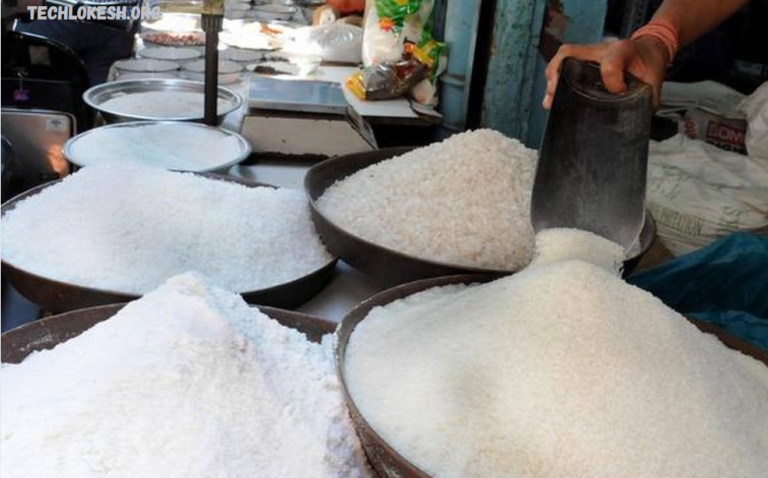The move aimed at calming rising market tensions and ensuring affordability for everyday consumers, the government has announced the import of 500,000 tonnes of sugar. This large-scale intervention comes amid growing concerns over sugar price volatility, which has affected household budgets and put pressure on small businesses nationwide.
By increasing supply through imports, the government aims to alleviate the current market crunch, particularly as demand remains high in the lead-up to festive and seasonal periods. The plan also reflects a broader effort to maintain food security and curb inflation in essential commodities.
Officials emphasize that the imported sugar will be distributed in a manner that benefits the public directly, primarily through fair-price shops and local markets. The move is expected not only to bridge the supply gap but also to discourage hoarding and speculative pricing.
The Current State of Sugar Prices
Sugar prices have been on a steady climb in recent months, causing concern among consumers and businesses alike. Poor weather conditions have impacted sugarcane harvests, resulting in a reduced overall domestic sugarcane supply. At the same time, rising costs for fuel, fertilizers, and labor have increased production expenses, adding further pressure to prices.
Additionally, disruptions in transportation and logistics have made it harder for sugar to move efficiently from farms to markets. This has sometimes led to shortages in certain areas, driving prices even higher. Furthermore, increased demand during festive seasons and from food manufacturers has further tightened the supply.
The combination of these challenges has resulted in sugar becoming less affordable for many households. Small businesses, particularly those in the food and beverage sector, are also facing financial pressure as their costs rise. The current situation has sparked calls for intervention to prevent prices from spiraling out of control and to ensure that sugar remains accessible to all.
Reasons Behind the 500,000-Tonne Import Strategy
The government’s decision to import 500,000 tonnes of sugar is driven by several pressing factors aimed at stabilizing the market and protecting consumers. First and foremost, domestic sugar production has fallen short due to unfavorable weather conditions and lower crop yields. This shortage has tightened supply, pushing prices upward and making sugar less affordable for many households.
Secondly, rising production costs, including higher prices for fertilizers, fuel, and labor, have increased the overall cost of sugar. These added expenses are often passed on to consumers, further inflating retail prices. The import strategy helps ease this pressure by supplementing the local supply and preventing prices from spiraling out of control.
Another critical reason is the need to prevent market speculation and hoarding. When supply is limited, traders and sellers may withhold stock in hopes of profiting from higher prices, which exacerbates shortages and drives costs even higher. Increasing the available sugar volume discourages such practices by creating a more balanced market.
Impact on Domestic Sugar Producers
The government’s decision to import 500,000 tonnes of sugar is expected to have mixed effects on domestic sugar producers. On one hand, the influx of imported sugar may lead to increased competition in the market, potentially putting downward pressure on local prices. This could impact the profit margins of domestic farmers and mills, especially those already struggling with higher production costs and lower yields. Some producers may find it more challenging to sell their sugar at profitable rates, which could impact their operations and future planting decisions.
On the other hand, this move may encourage producers to improve their efficiency and quality to remain competitive. It could also prompt greater innovation and investment in the domestic sugar industry, enabling producers to adopt more effective farming techniques and modernize their processing facilities. In the short term, some producers may feel the impact, but the overall goal is to strike a balance between market stability and sustainable growth. Ideally, the government will also provide support to local producers to help them navigate these changes, ensuring that the industry remains viable while consumers benefit from more affordable sugar prices.
Read Also: Cool Savings – How the New Government Fan Replacement Programme Aims to Slash Your Electric Bill
Economic Implications for Consumers
For consumers, the government’s plan to import 500,000 tonnes of sugar could bring significant economic relief. With sugar prices having surged recently, many households have faced higher grocery bills, which have affected their overall budget. By increasing the supply through imports, the government aims to ease these price pressures, making sugar more affordable and accessible.
Lower sugar prices can also help reduce the cost of various processed foods and beverages that rely on sugar as a key ingredient, indirectly benefiting a wider range of consumers. This price stabilization may increase purchasing power, enabling families to allocate their spending toward other essential needs.
However, the benefits for consumers depend on how effectively the imported sugar reaches the market and whether retailers pass on the savings to consumers. If successful, this intervention can help curb food inflation and improve living standards, especially for low- and middle-income households. Ultimately, the move aims to create a more balanced market where consumers are not forced to bear the brunt of supply shortages and price spikes.
Comparison with Previous Sugar Import Policies
The government’s current plan to import 500,000 tonnes of sugar builds on earlier efforts to manage supply shortages and stabilize prices. In past years, sugar imports were often used as a short-term solution during periods of poor harvests or unexpected demand spikes. However, the scale and timing of these imports varied, sometimes leading to delays in relief reaching consumers.
Compared to previous policies, this latest import plan is more proactive and substantial, reflecting lessons learned from earlier challenges. Earlier import measures tended to be smaller or reactive, addressing problems only after prices had already risen sharply. This time, the government aims to prevent a further surge in prices by acting early and committing to a larger volume.
Additionally, there is greater coordination this round to ensure smoother distribution and quicker impact on retail prices. While earlier import policies sometimes faced logistical hurdles, this plan emphasizes efficient clearance and market release to maximize benefits.
Frequently Asked Questions
Is this import a permanent solution?
No, it is a short- to medium-term measure to manage supply shortages while domestic production recovers.
How does this affect consumers?
Consumers can expect more stable sugar prices and improved availability, which may also help reduce costs for other sugar-based products.
Will imported sugar be of the same quality as local sugar?
Imported sugar typically meets national quality standards, although there may be slight variations depending on the source of the sugar.
Are there any risks to the local sugar industry with these imports?
There is a risk that local producers may face price pressure, which could impact their income, but government support programs may help mitigate this.
How will the government ensure fair distribution of the imported sugar?
The government is collaborating with relevant agencies to monitor supply chains and prevent hoarding or unfair pricing, ensuring that sugar reaches consumers at a fair price.
Conclusion
The government’s plan to import 500,000 tonnes of sugar represents a decisive step toward stabilizing the sugar market and easing the financial pressure on consumers. By boosting supply at a critical time, this move aims to bring down soaring prices and ensure that sugar remains affordable for households and businesses alike. While the influx of imported sugar may pose challenges for domestic producers, it also encourages the industry to adapt and improve. Ultimately, the success of this initiative will depend on effective distribution and cooperation between the government, suppliers, and retailers. If managed well, it promises sweet relief for consumers while balancing the needs of the local sugar sector.

